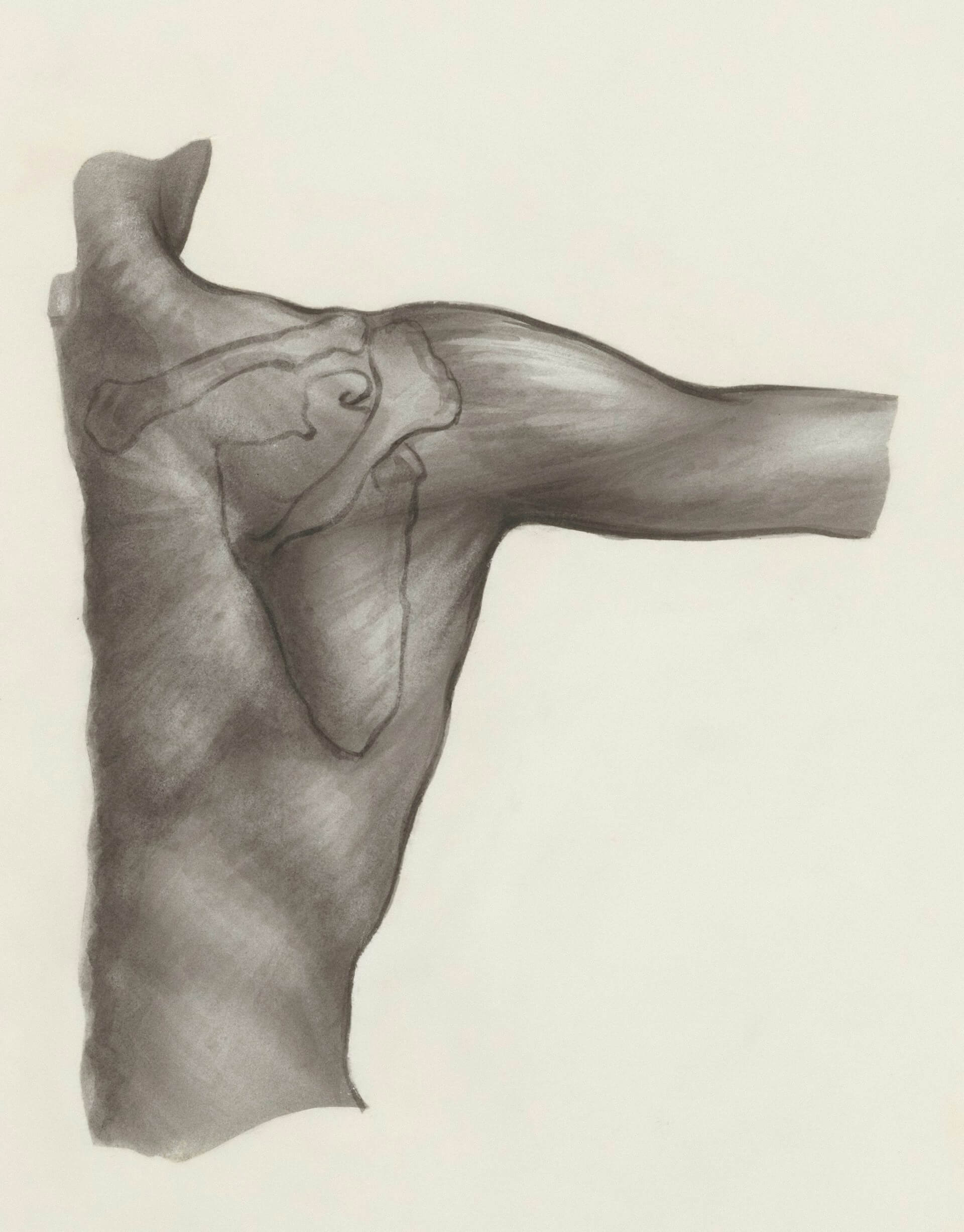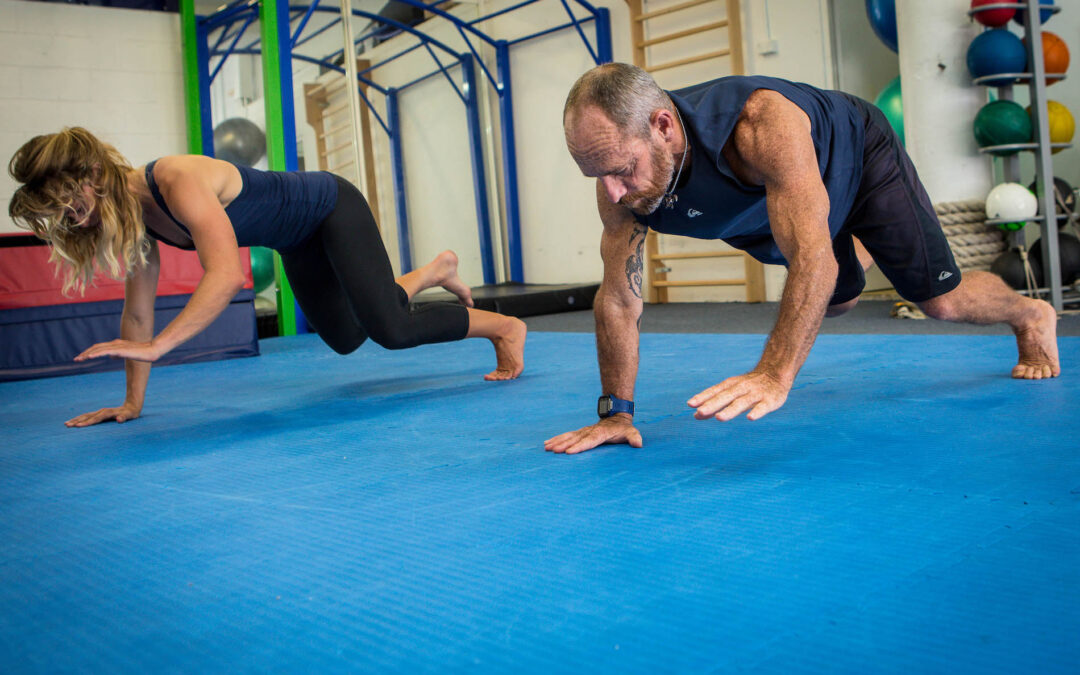In today’s world, characterised by sedentary lifestyles and desk-bound work, many people suffer from shoulder problems due to inadequate mobility. Activities like lifting, throwing, swimming, and paddling often exacerbate these issues, particularly when shoulder movement is limited or unbalanced. Our modern habits lead to common postural problems: rounded shoulders, forward-leaning heads, and misaligned hips—all of which contribute to unnecessary stress on the body. To help surfers address these issues, this article includes a video at the end with 3 essential tips for healthier surf shoulders.
Assessing the Root Causes
Each person’s shoulder issue is unique, making a professional assessment crucial. Addressing symptoms alone can lead to missed diagnoses, as the actual cause might lie in a completely different part of the body. For example, a stiff hip or a breathing issue could lead to shoulder problems by pulling the head and shoulders out of alignment. The body is incredibly adaptive, often compensating for dysfunctions in one area by creating issues in another.
The Anatomy of Shoulder Instability
The shoulder joint, which includes the clavicle (collarbone), scapula (shoulder blade), and humerus (upper arm bone), is naturally more mobile than stable. Unlike the hip joint, which offers greater stability, the shoulder’s design prioritises a wide range of motion. However, this trade-off makes the shoulder more vulnerable to injury. The shoulder socket (glenoid) covers only about 30% of the humeral head, with stability provided by the labrum (a cartilage ring), ligaments, and tendons. Any significant injury to the shoulder can disrupt the joint’s natural negative pressure, compromising its stability.

Key Problem Areas
Shoulder dysfunctions often mirror issues in other parts of the body. For example, a right shoulder problem can be linked to a left hip dysfunction. When walking, the body naturally counter-rotates; the cervical (neck) and lumbar (lower back) spine move together while the thoracic (upper back) spine rotates in the opposite direction. If one area lacks mobility, other joints compensate, leading to further problems. A stiff thoracic spine, for instance, can force the shoulders to compensate during activities like paddling, eventually leading to shoulder injuries.
The anterior (front) part of the shoulder capsule is particularly vulnerable, especially with poor posture common today. Rounded shoulders weaken and loosen this part of the capsule, increasing the risk of injury and degeneration, especially for those engaged in activities like paddling or sports that involve repetitive shoulder movements.
How Shoulder Issues Develop in Surfers
Surfing, especially the paddling aspect, strengthens certain shoulder muscles, including the pectorals, deltoids, trapezius, and latissimus dorsi. However, when these muscles become disproportionately strong compared to their opposing muscles, they can pull the arm bone upward, increasing the risk of impingement. The rotator cuff muscles play a crucial role in counteracting this upward force by pulling the arm bone downward, but if they are weak, impingement syndrome can develop. This condition occurs when the space between the rotator cuff and the acromion (part of the shoulder blade) becomes too tight, leading to muscle irritation and pain.
A subtype of impingement, known as internal impingement, arises from an imbalance in the shoulder capsule’s forces. This can occur when the front part of the capsule is too loose while the back part is too tight, leading to abnormal contact between the rotator cuff and the capsule, which can cause damage over time.
Addressing Shoulder Imbalances
The journey from impingement to a rotator cuff tear often begins with muscle imbalances and restricted mobility in the thoracic spine, neck, hips, and shoulders. Paddling overdevelops certain muscles, particularly the internal rotators, compared to their external counterparts, leading to further imbalance and increased stress on the rotator cuff.
Surfers may also develop shoulder issues due to tight hip flexors, which can cause imbalanced loading across the spine, hips, and knees. These imbalances can lead to core instability, further affecting shoulder health.
Treatment and Prevention
Effective treatment focuses on restoring balance to the shoulder by addressing overly tight muscles, improving mobility in the neck, upper back, and hips, and strengthening weak muscles. Below is a 3-Exercise Routine to help strengthening the muscles typically found week in long-time Surfers. Prehabilitation (injury prevention) and rehabilitation exercises are essential for surfers to prevent shoulder problems. Learning proper paddling techniques and strengthening foundational movements can also help reduce the risk of rotator cuff injuries.
In conclusion, everything in the body is interconnected. For many surfers, the front shoulder muscles are overused while the back muscles are neglected. To maintain shoulder health and continue enjoying activities like surfing, it’s crucial to restore balance to the shoulder joint, reduce stress on overworked muscles, stretch tight areas, and address any movement patterns causing pain.
To start sorting out your shoulder (and other body area) issues and stay in the water, head to Surf Strength & Conditioning.
